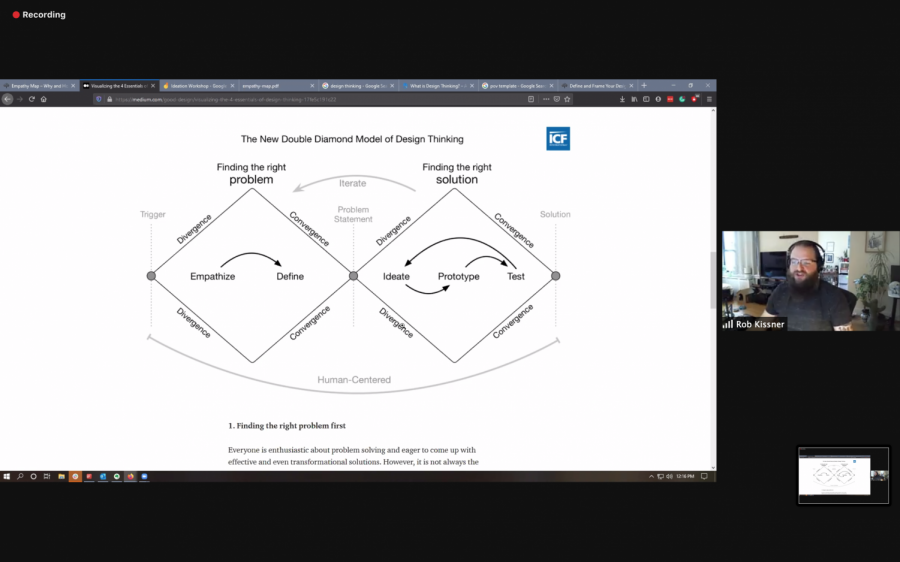Workshop focuses on letting go of constraints and free thinking in problem solving
Kissner stressed the importance of getting creative and letting go of pre-set ideas while brainstorming to come up with effective solutions while problem solving in the lens of design thinking.
February 25, 2021
The Identifying Problem & Ideation workshop, intended to help students with “design thinking,” was hosted by Rob Kissner on Feb. 18.
Kissner, Founder & CEO of the Digital Arts Experience, aimed to help students discover a problem worth solving through the process of design thinking. Design thinking is a design methodology that provides a solution-based approach to solving problems. Ideation is a key component to the innovation process, according to Kissner.
Participants in the workshop learned techniques for generating ideas and sharing them with potential users. Participants also learned how to identify user traits, needs and scenarios. The workshop also covered concept-testing.
Kissner explained the divergent process of design thinking to the participants as a basic way to figure out what the specific problem is.
“We have a trigger; we experience a problem; we put ourselves in the shoes of the users to learn some insight about it,” Kissner said. “Based on that we identify what the real need is and who the people are that have that real need and then converge on a clear and concise problem statement.”
Kissner stressed the importance of seeing the process of design thinking all the way through by examining all of the facts before coming to a conclusion.
“This is the pit fall for people who try to solve problems is that they come up with a solution as soon as they see the problem,” Kissner said. “Design thinking is about the solution not coming until way later because you are going to mess it up, you are going to fail, you are going to come up with the wrong ideas, you are not going to know enough. So, you go into this, with nothing in mind and based on what you learned, you throw everything that you can at the wall and slowly refine that solution until you start to make some headway.”
Kissner wanted the participants to understand the importance of letting go of “constraints,” prepositioned ways of thinking based on data collected, while brainstorming.
“When you start brainstorming as part of the ideation phase of design thinking, put all of the constraints aside,” Kissner said. “This is the hardest part about this. We have to put all of the constraints floating inside our heads aside and start to freely brainstorm.”
As one of the major points, Kissner wanted to point out that all ideas are important despite how far-fetched they may seem.
“Anything goes, it does not matter how realistic or not it is in this phase because you want to get creativity flowing, you want to be really playful with this process, and even if something is totally unattainable, there are kernels of things in there that may trigger new ideas,” Kissner said.








